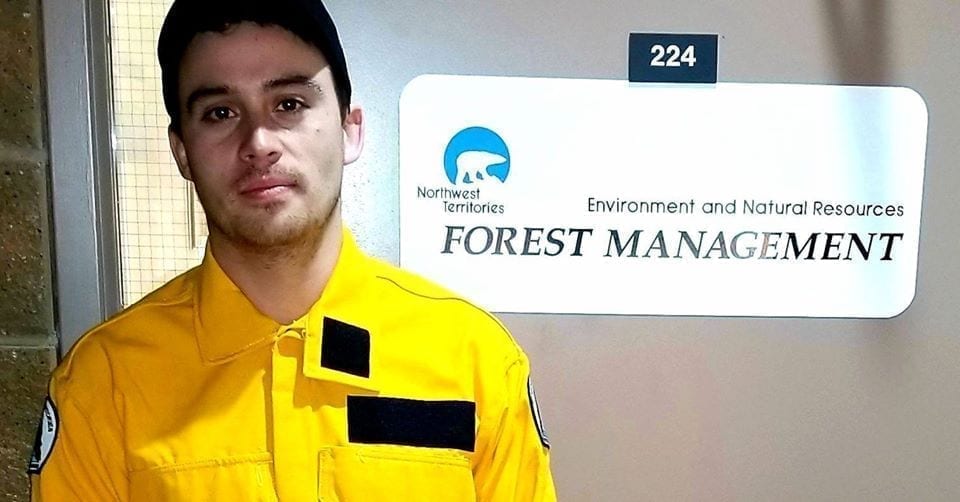Spencer Porter was waiting in Vancouver to board an 11 p.m. red-eye flight bound for Australia to help in the battle against that country's largest wildfire on record.
Porter is one of four NWT firefighters who took flights recently to battle the blazes that have consumed millions of hectares in Australia. On a 30-day deployment, they will assist aviation and planning efforts alongside the 24 other Canadians involved in the effort.
Porter had a mix of emotions as he headed into the deployment.
“A bit of excitement, a little bit nervous. Healthy mixture of both I think,” he said.

Photo Courtesy of Department of Environment and Natural Resources
“What’s going over there is pretty terrible. And being able to help in any capacity feels great."
This will be the sixth deployment of Canadian fire fighters.
The NWT Environment and Natural Resources department typically choose staff depending on Australia’s stated personnel needs, according to Mike Gravel, director of forest management.
Afterward, those names go to the Canadian Interagency Forest Fire Centre (CIFFC), which then selects the team from a national list. Any future deployments depend on the organization's request and who’s available.
“It’s a big commitment to leave your family for over a month,” he said, explaining that a month’s absence can be difficult.
Porter, who’s also a volunteer firefighter in Fort Smith, stepped forward after he saw coverage of the wildfires that have scorched wide swathes of Australia, causing at least 28 deaths so far.
“What’s going over there is pretty terrible. And being able to help in any capacity feels great,” he said.
The sight of volunteer Australian firefighters away from their homes, jobs and families —often times without pay — was inspirational, he said.
“They’re taking all their personal time to try and battle this,” he said.
The three others heading to Australia from the NWT are: Hay River’s Raelene Lamalice, a resource unit leader who oversees planning needs; Jonathan Williams, an aerial observer who flies above to monitor the action; and Marlon Labach an air support group supervisor who coordinates aircraft from the ground.
Williams and Labach are seasonal employees who winter in Manitoba and British Columbia, respectively.
All except Williams, who’s travelling to the state of Southern Australia, are headed to the state of Victoria.
Environment and Natural Resources Minister Shane Thompson said he was proud that “we’re able to send quality staff in time of need of other people. I think it’s great to here and great to see.”
Once there, Porter’s role will be at an air tanker base, which typically involves overseeing maintenance of facilities, crews and equipment. That includes ensuring the aircraft are properly equipped as they depart to fight fire.
It will be Porter’s first deployment outside of the North, let alone out of the country.
While he was unaware of any differences between fighting fires in Australia and NWT, he said he would soon find out.
“I think as much as anybody, seeing them in need, seeing that they need assistance, it feels really good to help out anyway you can,” he said, adding that barring hoping on a plane to Australia, donations are appreciated.
“Every bit counts,” Porter said.
![IMG_2892[1]](https://www.bpmcdn.com/f/files/nnsl/import/2020-01/IMG_28921-scaled-scaled.jpg;w=960)